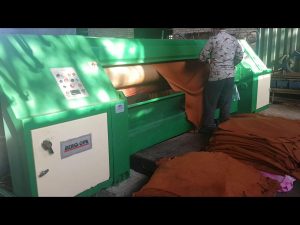
Human beings have always tried to provide the ideal and better conditions for their lives by choosing the best. Therefore, we strive to achieve this goal by producing quality products in order to achieve the vision of the leather industry, shoes and leather products industry and to satisfy customers.
In year of 1397, after the US withdrawal from Borjam and the sharp rise in the exchange rate against the Iranian rial, and in fact more than tripled the value of the national currency, followed by rampant inflation, the country’s economy entered a new chapter of challenge.

Although the government tried to reduce the psychological burden of inflation by importing factory raw materials at exchange rates below the market, unfortunately the abuses in order registration and the seemingly unintentional allocation of cheap currencies to consumer and non-essential goods, in addition to It did not work, but the market quickly went unnoticed, and prices were set in free currency, and the majority of consumer goods tripled, causing a major shock.
The leather industry, despite the appearance of the case that the raw material (raw leather) is domestic and in principle should not be much affected by the increase in exchange rates, unfortunately practically earlier than other goods adjusted to the free currency and put a lot of pressure on artisans. The boom in smuggling of livestock and livestock also complicated the raw leather market.
In the context of the leather industry, leather processing chemicals, which are completely dependent on imports, also faced two challenges. First, the registration of orders for both new and existing imports at customs was caught in the vortex of numerous and sometimes contradictory decisions, and as a result, its stock in the market and factories was severely reduced. Secondly, some European chemical producers refused to give proforma under the pretext of sanctions, and imports from Turkey were made at much higher prices. Finally, the chemicals were unfortunately traded beyond the free exchange rate in the market, and the result was that a number of factories saw production decline, and the price of leather rose rapidly, affecting upstream industries such as footwear and leather goods.
This happened while foreign brands of shoes and leather products gradually left the market, and the import of leather was practically stopped due to high prices due to rising exchange rates. All these factors caused the price of leather and leather products to increase more than twice as much as before, which decreased due to the sharp decrease in the purchasing power of the leather and leather products sales community.
The outlook for the leather industry in 1998 if:
1- The government can provide the necessary currency for the import of chemicals and facilitate its import operation,
2- Prevent the smuggling of live skin and livestock,
3- Provide the necessary facilities for importing heavy skin shortages in the form of wet blue
4- To give the necessary motivation to leather craftsmen by helping to reconstruct and modernize light leather industries with the aim of production and export.
5- Control and manage inflation;
6- To organize the real exchange rate and the fluctuation of the unproductive currency game of the society which is caused by economic instability.
It is hoped that prices will stabilize, and factories will not face a decline in production, otherwise price instability will reduce consumption and its natural consequence will be reduced production and employment in the leather industry and upstream industries, including shoes and products. It is a leather that will have harmful effects.
Mr. Hassan Nasirian

The Dalir leather industries, producing all kinds of natural leathers, in order to continue quantitative and qualitative activities and optimal use of its facilities and resources, in order to satisfy customers, has focused its strategic orientations around the following axes:
• Understanding and identifying the wants and needs of customers;
• Identify and pay attention to legal requirements, safety and strive to meet them;
• Belief in human resources and participation of this force as the main capital of the organization and efforts to maintain the dignity of this capital;
• Continuous improvement through the implementation of quality management system;
• Increasing competitiveness by increasing the range of products and product quality
• Reduce waste in order to make optimal use of resources and preserve the environment.
• The management of The Dalir Leather Industries is responsible for implementing and institutionalizing the above policy in the organization and in order to achieve these goals, has implemented the ISO9001 quality management system and customer requirements.
“Thank you, dear reader, for your attention to this article. You can also express your views below this post regarding the outlook for the leather industry in year of 1398.”